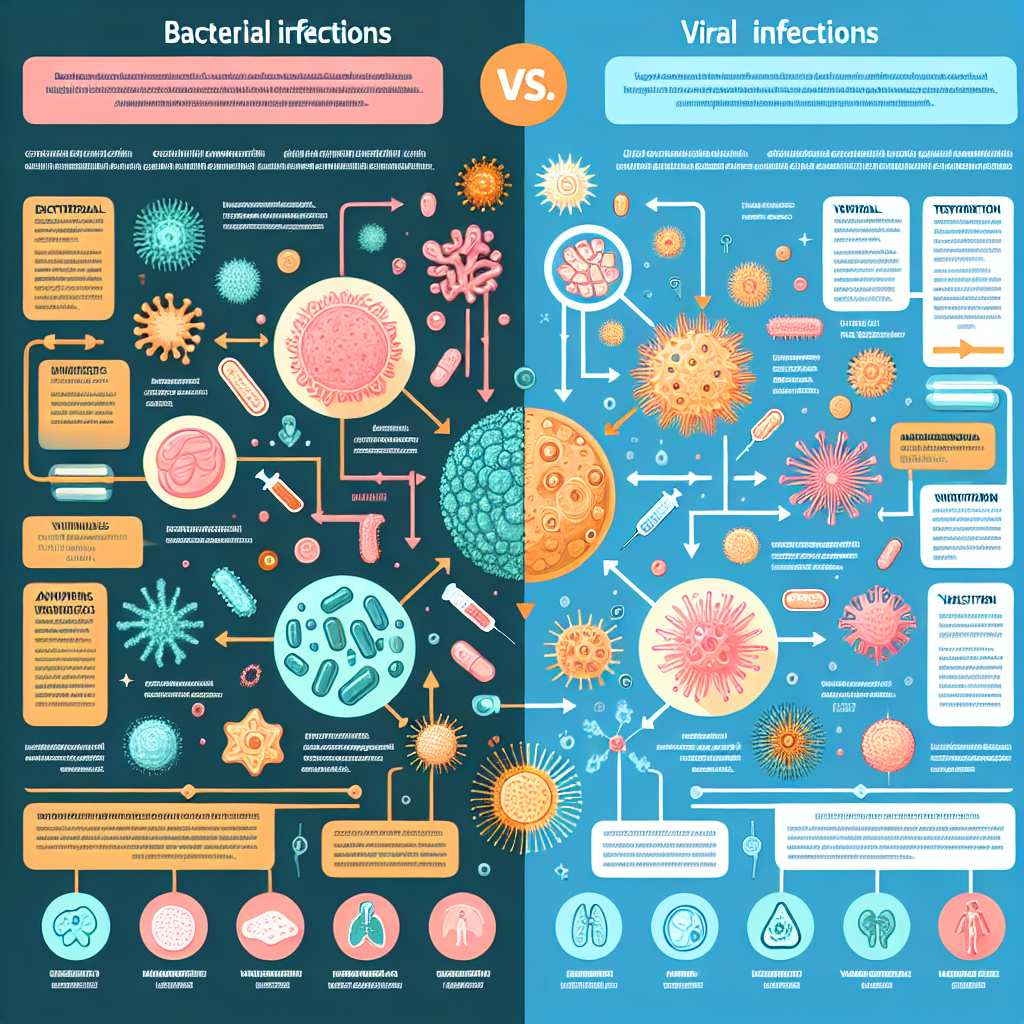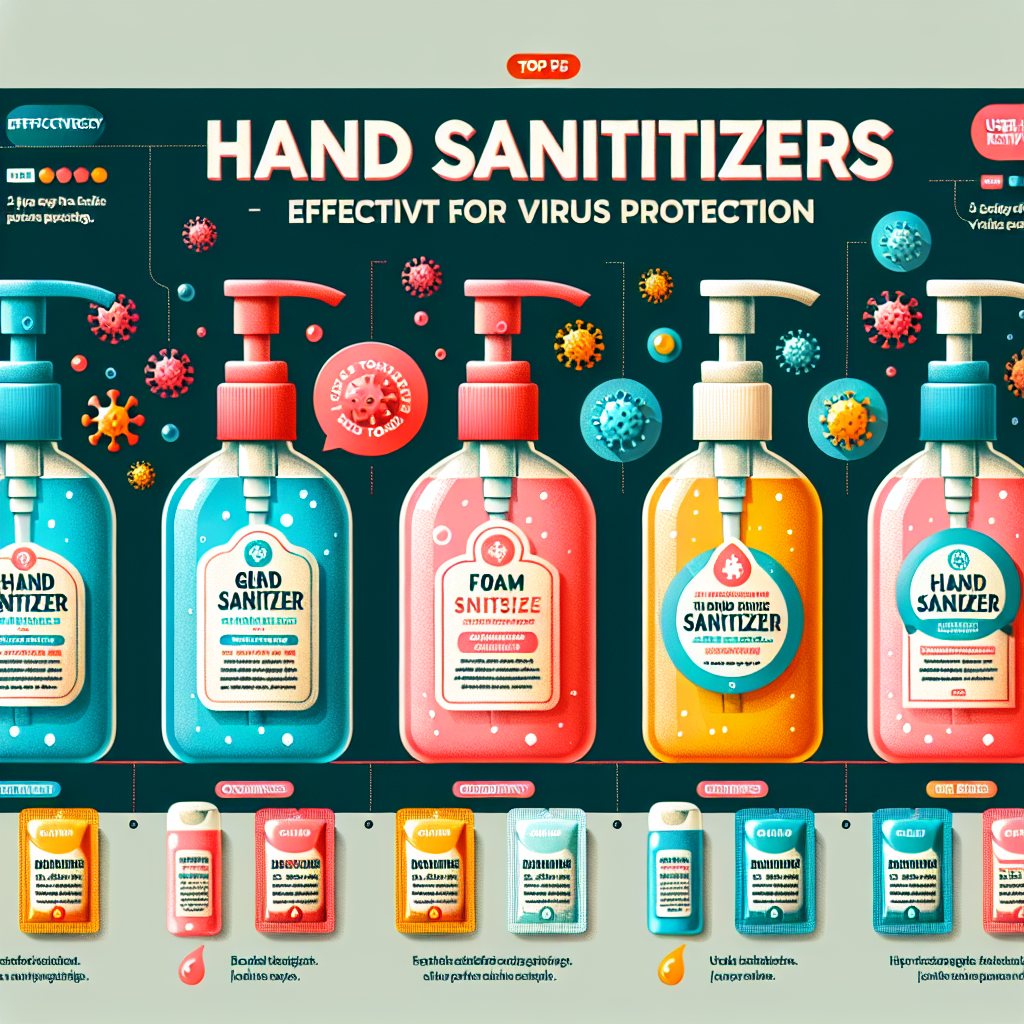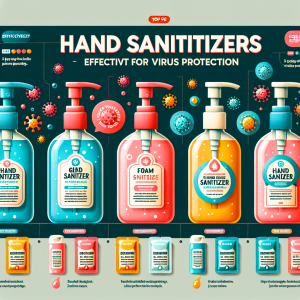What is the difference between a bacterial and a viral infection?
In the realm of human health, infections are common ailments that can significantly impact well-being. Among the myriad of pathogens that can cause infections, bacteria and viruses are the two primary culprits. Understanding the differences between bacterial and viral infections is crucial for effective diagnosis, treatment, and prevention. This article will explore the fundamental distinctions, characteristics, transmission methods, and treatment approaches for these two types of infections.
Understanding the Basics: Bacterial vs. Viral Infections
Bacterial infections are caused by bacteria, which are single-celled microorganisms that can thrive in various environments, including soil, water, and the human body. Bacteria can be beneficial, such as those found in the gut that aid digestion, or harmful, leading to infections like strep throat, tuberculosis, and urinary tract infections. These infections typically require medical intervention, which often includes antibiotics to eliminate the offending bacteria.
In contrast, viral infections are caused by viruses, which are much smaller than bacteria and cannot reproduce independently. Viruses invade host cells, utilizing the cellular machinery to replicate and spread. Common viral infections include the flu, common cold, and COVID-19. Unlike bacterial infections, viral infections often cannot be treated with antibiotics, necessitating different therapeutic approaches.
The distinction between bacterial and viral infections is not just academic; it has significant implications for public health, treatment protocols, and patient education. Misdiagnosing a bacterial infection as viral can lead to inappropriate treatments, such as overprescribing antibiotics, which contributes to antibiotic resistance. Understanding these differences helps in recognizing symptoms and seeking appropriate care.
Key Characteristics of Bacteria and Viruses Explained
Bacteria are prokaryotic organisms, meaning they lack a nucleus and other membrane-bound organelles. They possess a rigid cell wall, which allows them to maintain their structure and protect against environmental changes. Bacteria can be classified into various shapes, including cocci (spherical), bacilli (rod-shaped), and spirilla (spiral-shaped), and they reproduce asexually through a process called binary fission, allowing rapid population growth under favorable conditions.
Viruses, on the other hand, are acellular and consist of a core of genetic material (either DNA or RNA) surrounded by a protein coat called a capsid. Some viruses may also have an outer lipid envelope. Their lack of cellular structure means they are highly dependent on host organisms for replication. Viruses can mutate quickly, which can lead to new strains that may evade the immune system or resist treatments. This adaptability makes them particularly challenging to combat.
The immune response to bacterial and viral infections is also different. The body typically responds to bacterial infections with antibodies and other immune cells that target the bacteria directly. In response to viral infections, the immune system activates cytotoxic T cells and produces antibodies to neutralize the viruses and prevent them from hijacking healthy cells. Understanding these characteristics is essential for effective treatment and prevention strategies.
Transmission Methods: How Bacterial and Viral Infections Spread
Bacterial infections can spread through various transmission methods, including direct contact with an infected person, contaminated surfaces, or consumption of contaminated food and water. For instance, bacteria that cause food poisoning can be ingested through improperly cooked meals, while skin infections can occur through cuts or abrasions that come into contact with infectious bacteria. Airborne transmission can also occur, particularly with bacteria like Mycobacterium tuberculosis.
In contrast, viral infections often spread through respiratory droplets when an infected person coughs or sneezes. Contagious diseases such as the flu and COVID-19 are prime examples of viral transmission through the air. Additionally, viruses can be transmitted via bodily fluids, such as blood or saliva, as seen with hepatitis B and HIV. Touching contaminated surfaces followed by touching the face can also facilitate the spread of certain viruses, exemplifying the need for rigorous hygiene practices.
The understanding of transmission methods is vital for implementing effective public health measures, including vaccination campaigns and hygiene practices to control outbreaks. Informing the public about the differences in transmission can help reduce stigma associated with certain infections and promote healthier behaviors in communities.
Treatment Approaches: Managing Bacterial vs. Viral Infections
The treatment of bacterial infections typically involves antibiotics, a class of medications specifically designed to target bacteria and inhibit their growth. However, the choice of antibiotic must be guided by culture and sensitivity tests to ensure the selected medication is effective against the specific bacteria causing the infection. Misuse of antibiotics can lead to antibiotic resistance, making future infections harder to treat.
For viral infections, treatment strategies differ significantly. Antiviral medications may be available for certain viral infections, such as influenza or HIV, but they work by inhibiting the virus’s ability to replicate rather than killing it outright. In many cases, supportive care, such as hydration, rest, and over-the-counter medications to relieve symptoms, is the primary approach. Vaccines also play a crucial role in preventing viral infections, providing immunity before exposure to the virus.
Education on the appropriate use of antibiotics and antiviral medications is essential for effective public health management. Patients should consult healthcare professionals for accurate diagnoses and treatment recommendations tailored to their specific infections, emphasizing the importance of distinguishing between bacterial and viral illnesses.
In summary, understanding the differences between bacterial and viral infections is critical in managing health effectively. Recognizing the unique characteristics, transmission methods, and treatment approaches can lead to better care and improved health outcomes. As we continue to navigate the complexities of infectious diseases, educating ourselves and others can empower communities to make informed choices and adopt preventive measures. For further reading, consider exploring reputable sources such as the Centers for Disease Control and Prevention (CDC), World Health Organization (WHO), and Mayo Clinic.
Top hand sanitizers for virus protectionSeasonal flu vaccine effectivenessLatest research on virus transmissionRelevant LinkRelevant LinkRelevant Link













